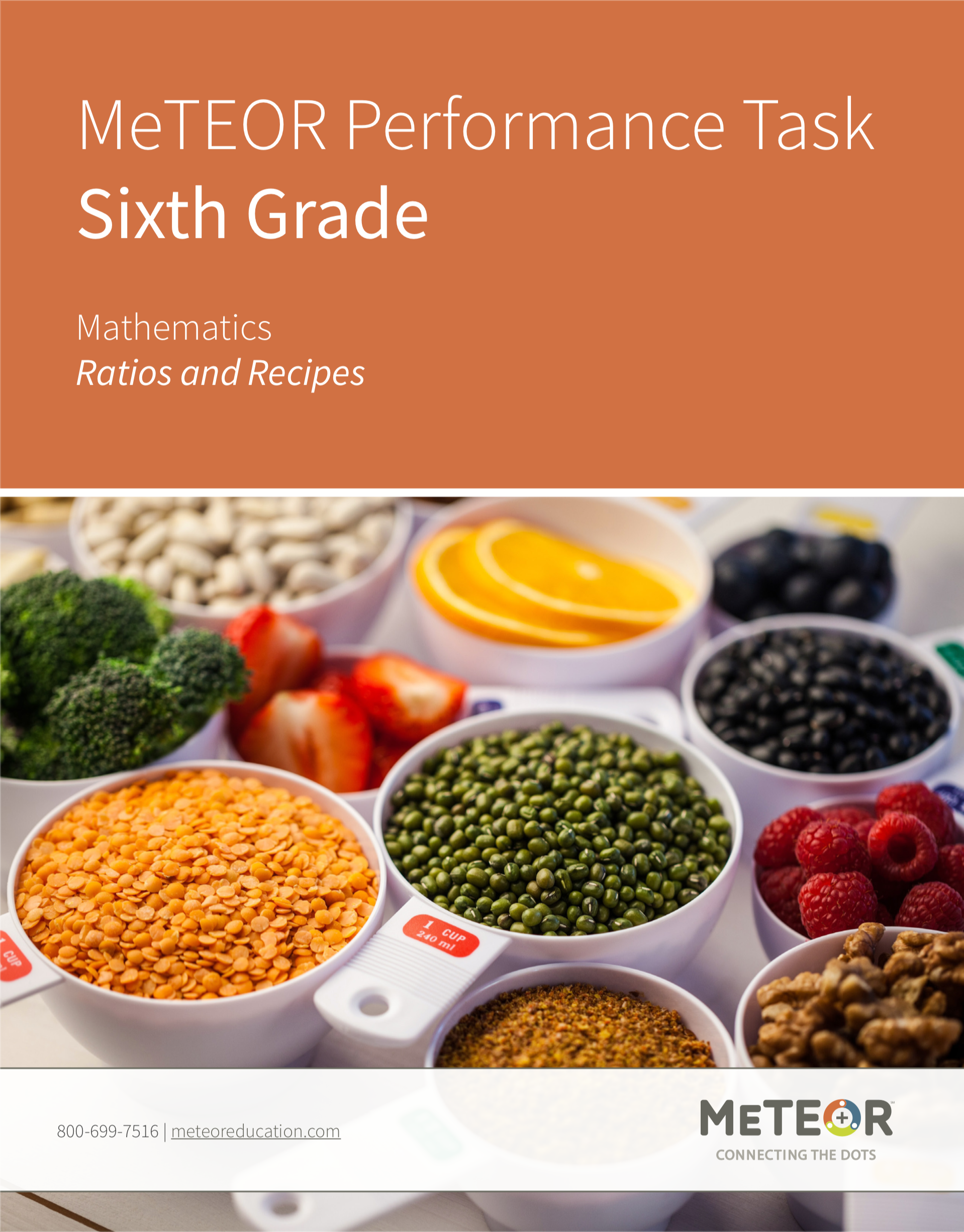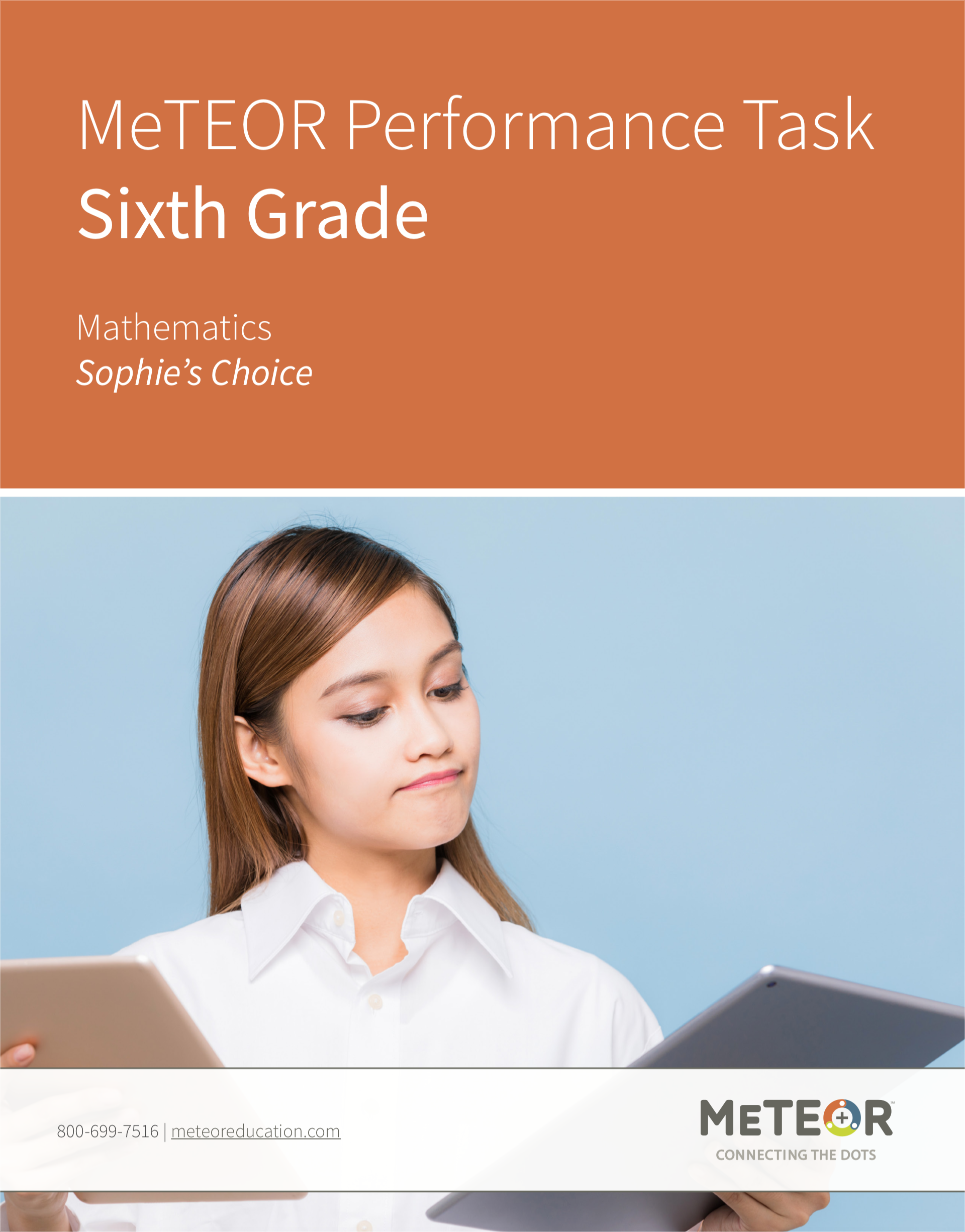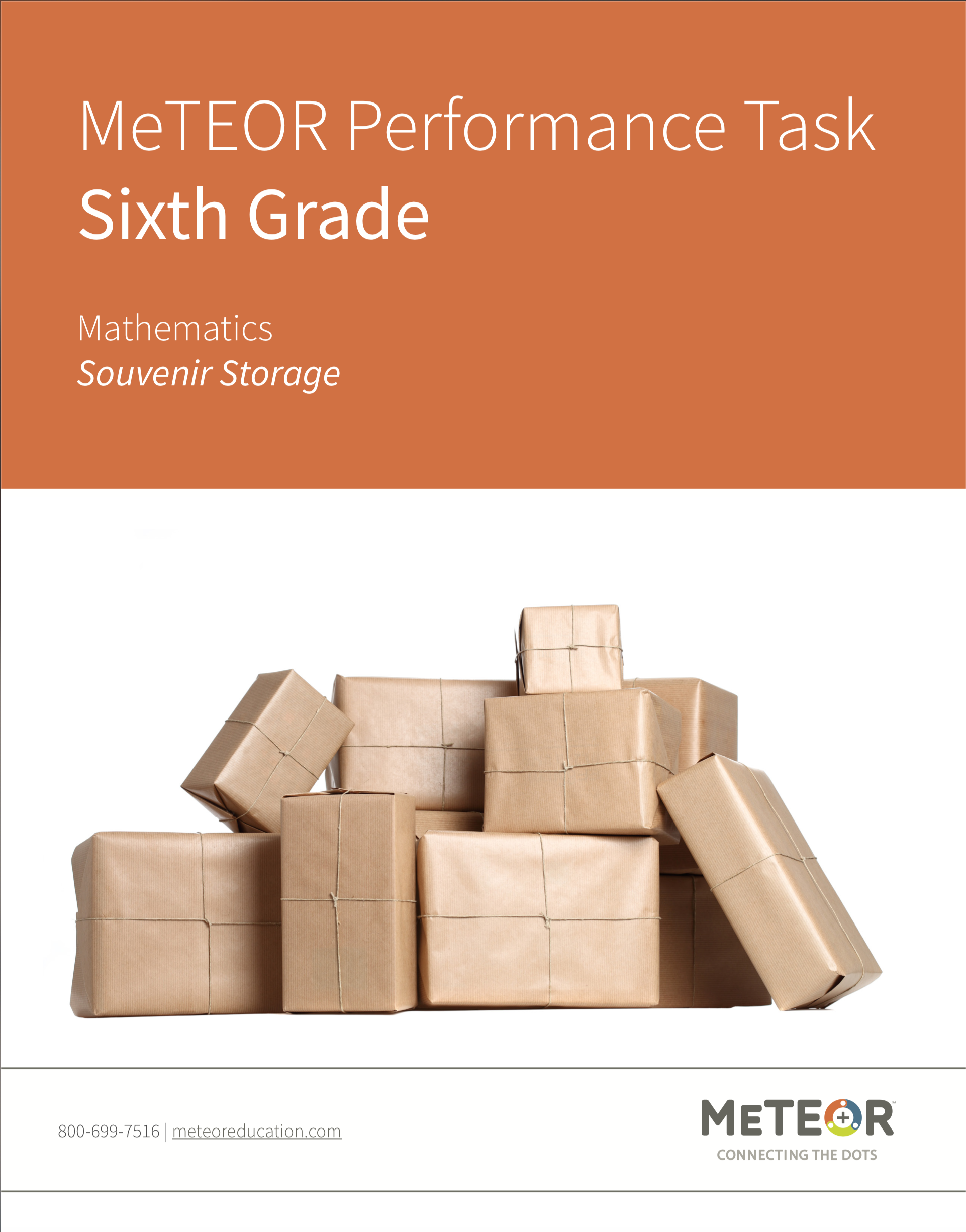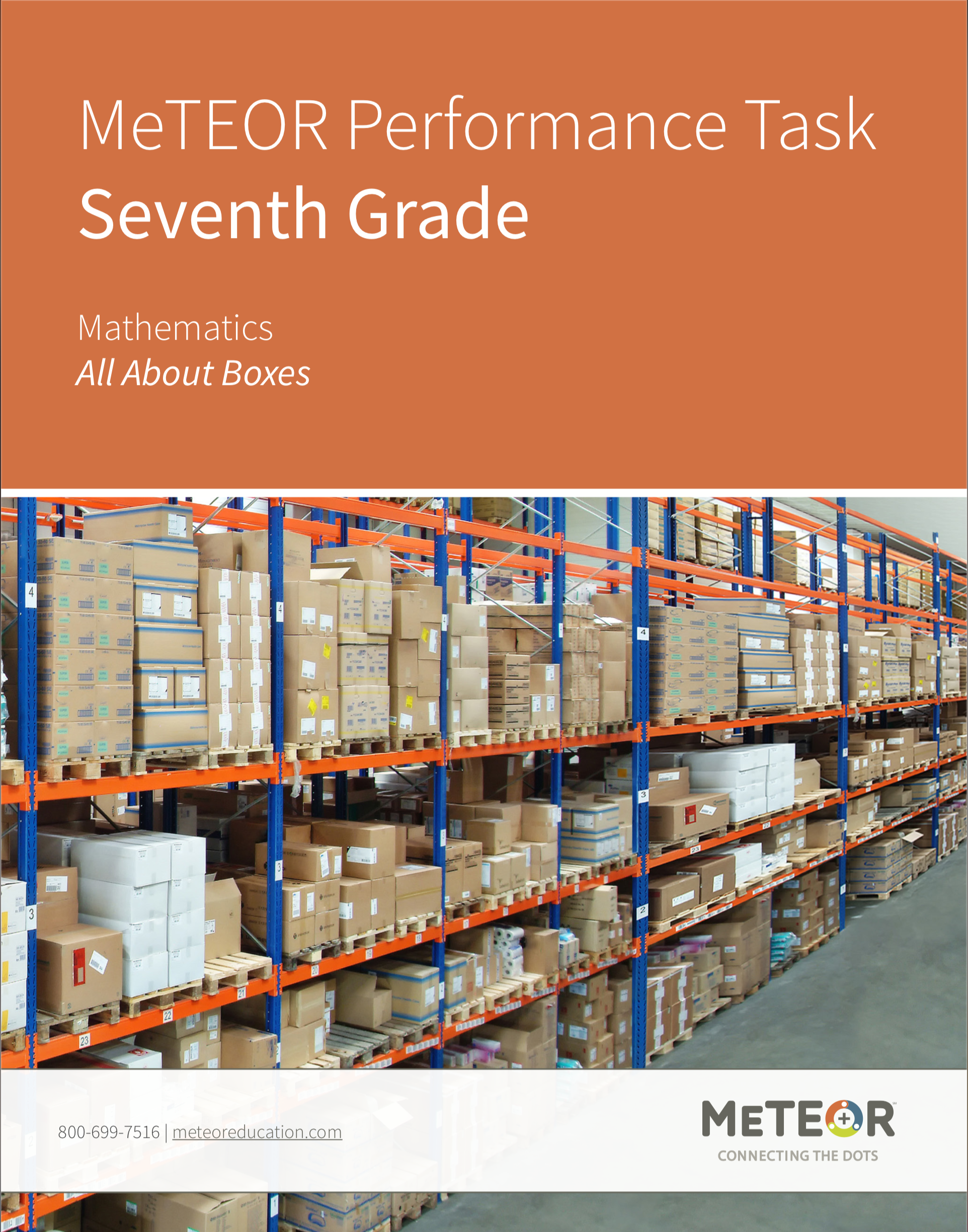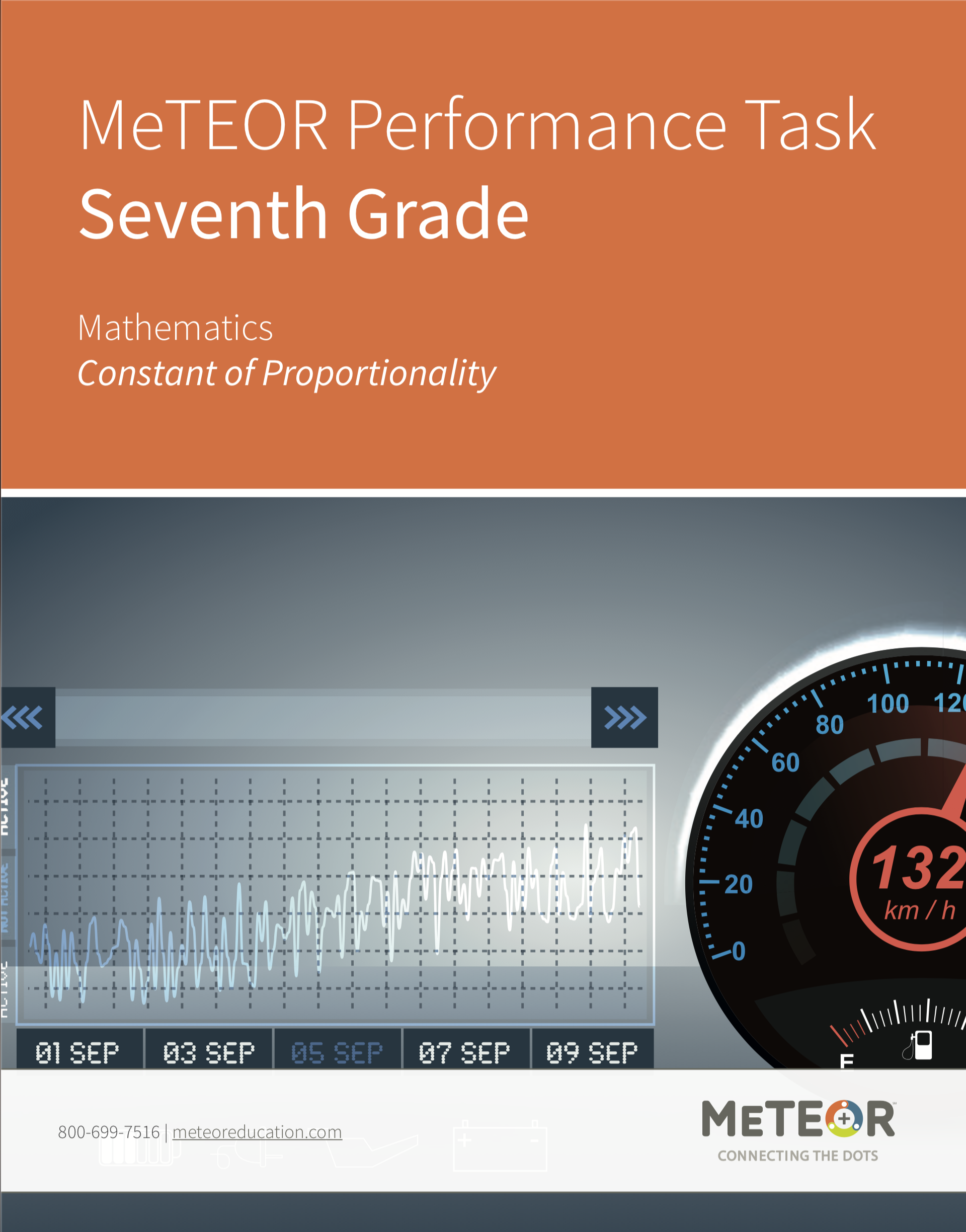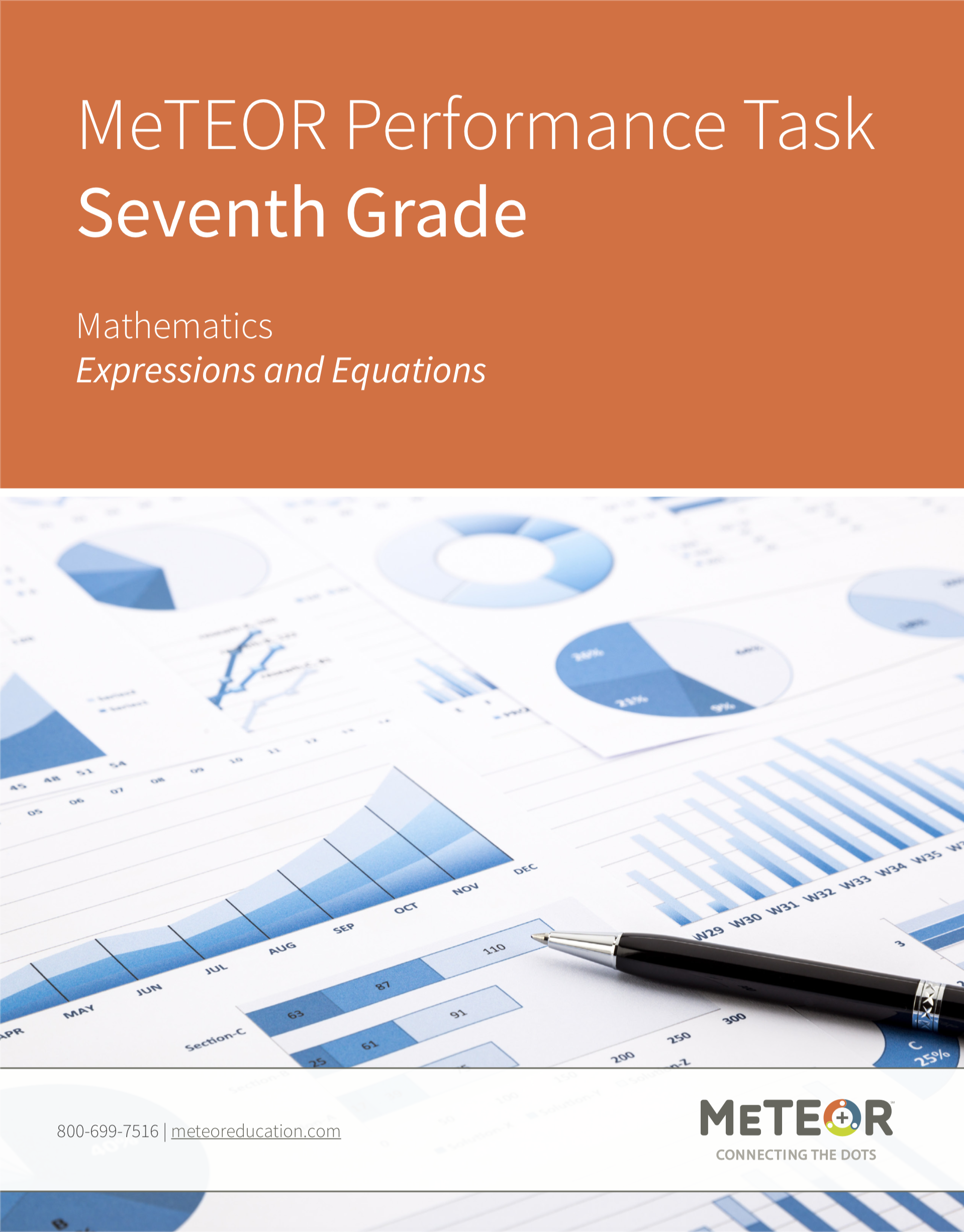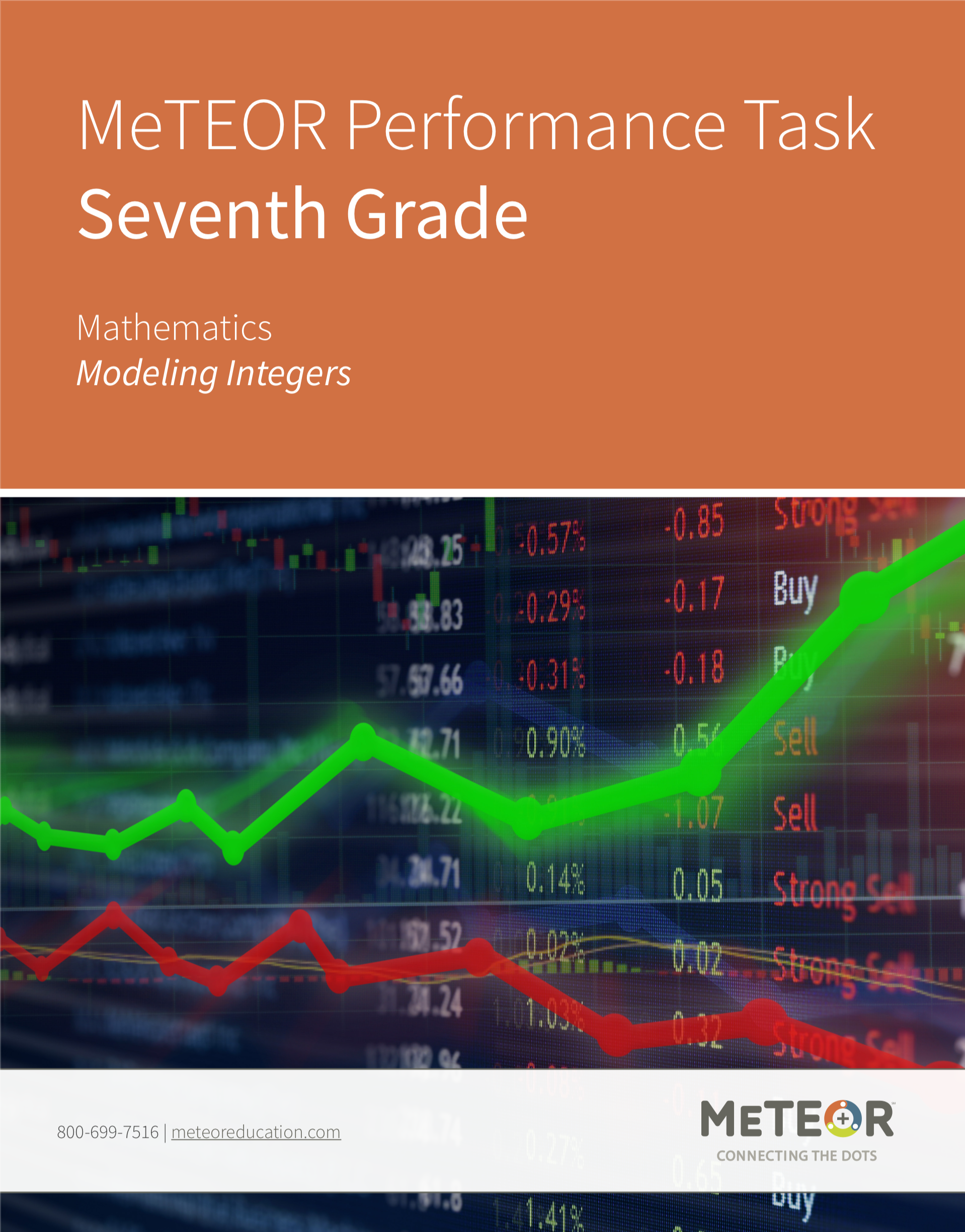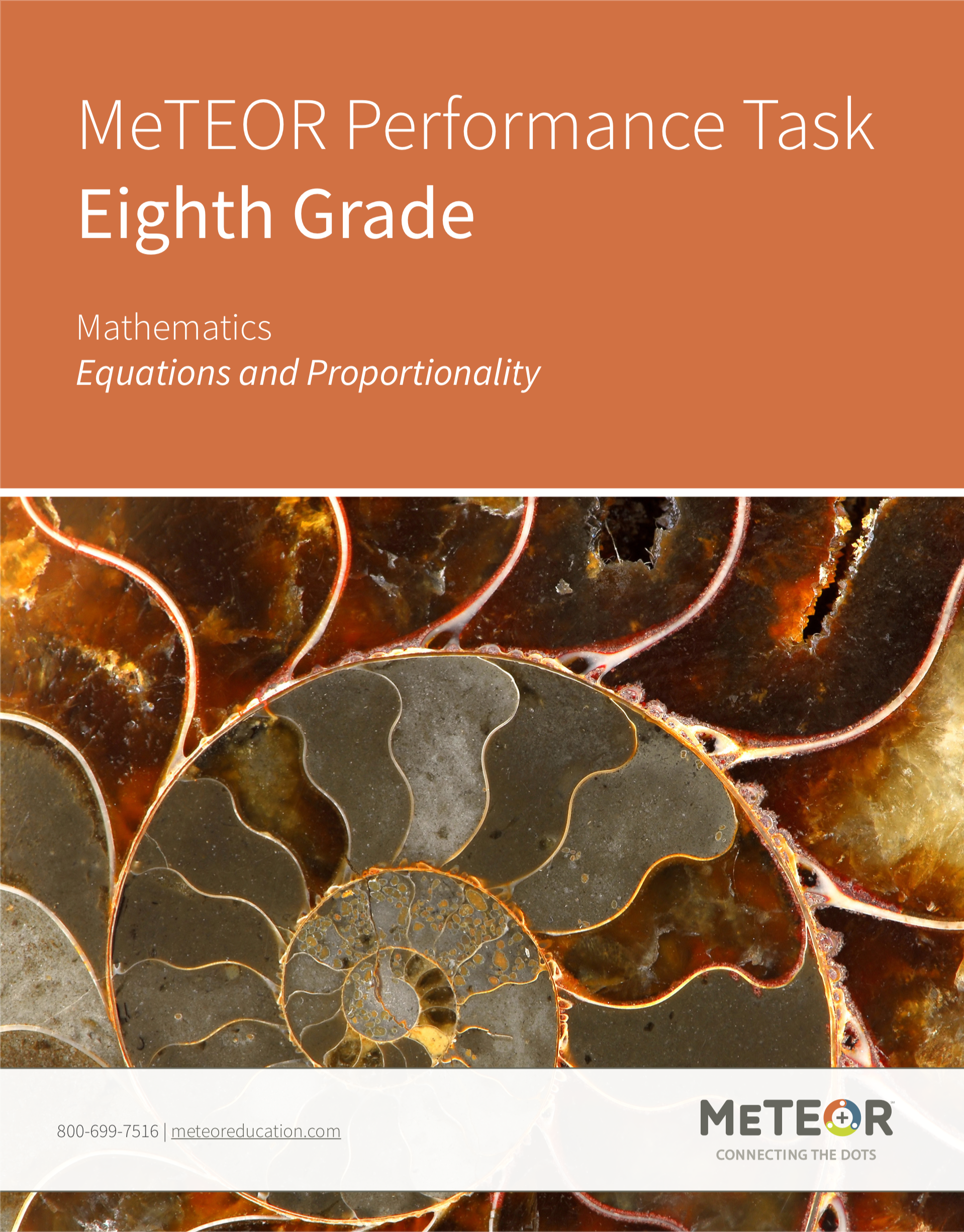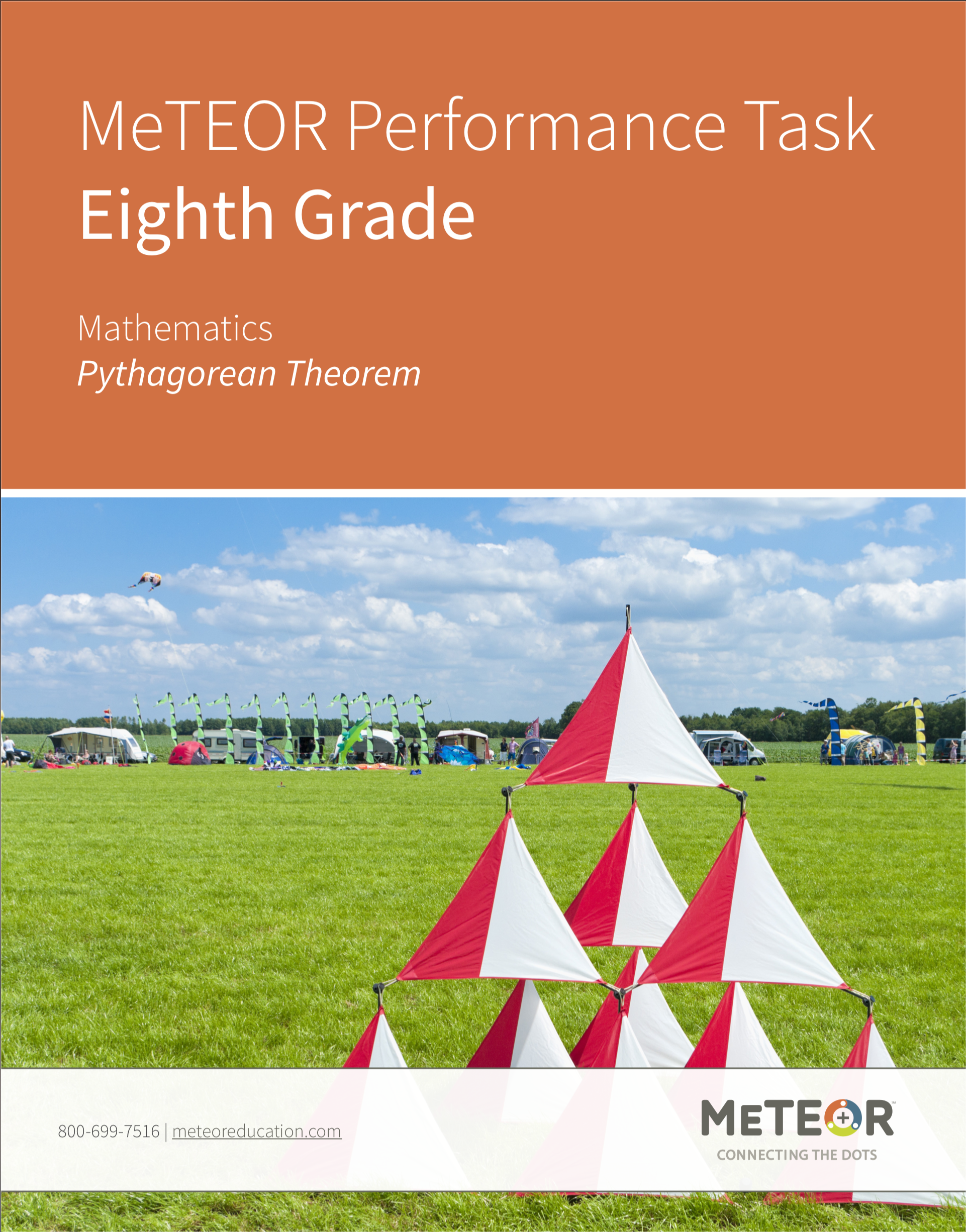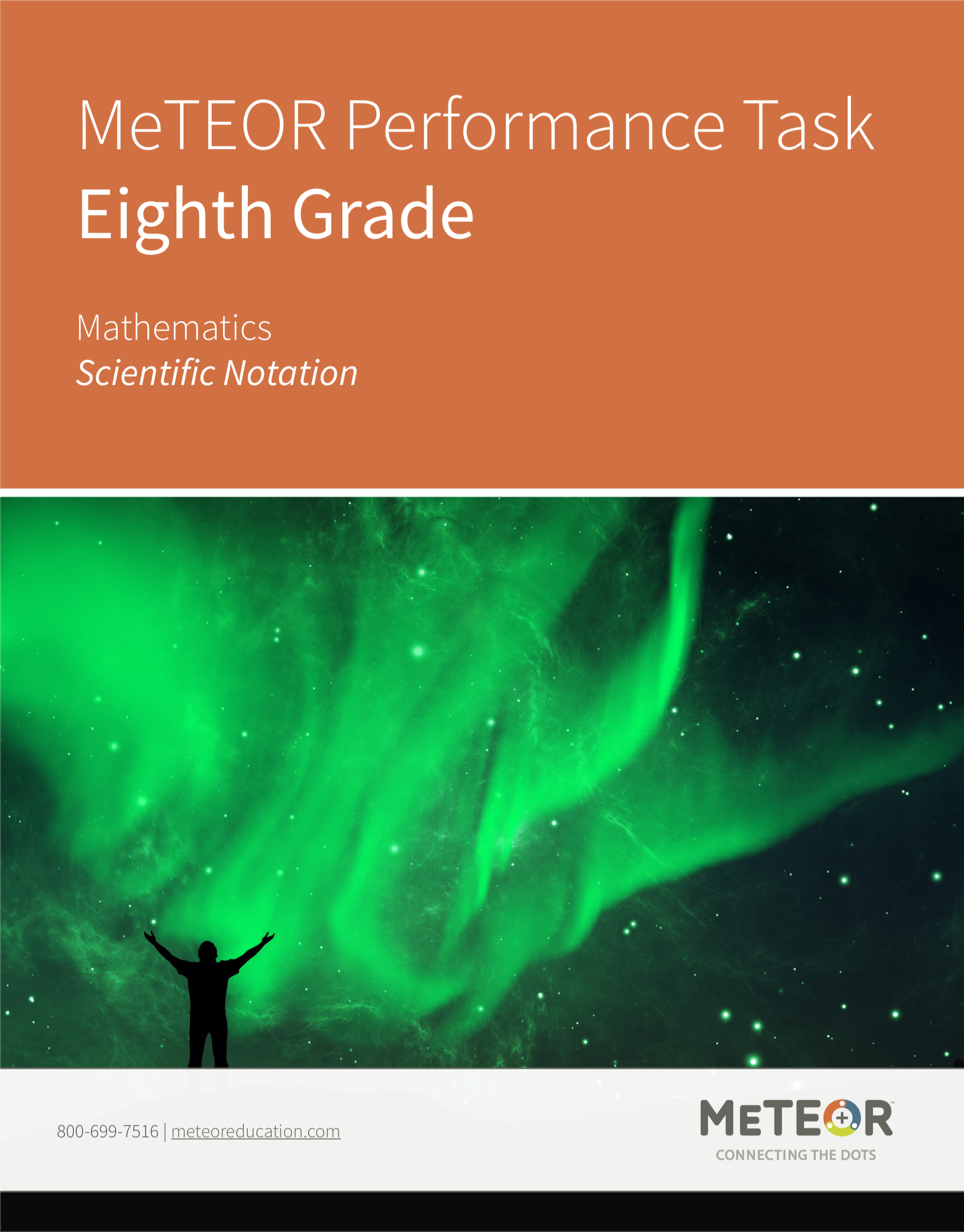Math Performance Tasks: 6th – 8th Grade
6th Grade Performance Tasks
Task 1:
The Lemonade Stand
Summary
This Performance Task focuses on Integers. The core ideas for this task are that students will understand integers can be positioned on a number line; quantities have opposite directions on a number line; and positive and negative numbers can represent quantities in a real world context.
Task 2:
Ratios with Recipes
Summary
This Performance Task focuses on Ratios. The core ideas for this task are that students will understand operations involving fractions; equivalent fractions; ratio reasoning; and proportional relationships.
Task 3:
Sophie’s Choice
Summary
This Performance Task focuses on Exponents. The core ideas for this task are that students will understand the use of exponents in mathematical expressions; how to reason logically with multiplication; how to extend previous understanding of multiplication when solving real-world problems; expressions in different forms can be equivalent, and they can use the properties of operations to rewrite expressions in equivalent forms; and how to rewrite expressions in different ways: written descriptions, creating a table, or creating a graph.
Task 4:
Souvenir Storage
Summary
This Performance Task focuses on Volume. The core ideas for this task are that students will understand how to find the volume of a right rectangular prism; how to multiply fractions to find volume; and how to apply the formula V=lwh.
7th Grade Performance Tasks
Task 1:
All About Boxes
Summary
This Performance Task focuses on Volume and Surface Area. The core ideas for this task are that students will understand area, surface area, volume and their differences; characteristics and properties of three-dimensional shapes; how to read given diagrams of three-dimensional shapes; and how to calculate, using formulas, area, surface area and volume.
Task 2:
Constant of Proportionality
Summary
This Performance Task focuses on Unit Rate and Proportion. The core ideas for this task are that students will understand how to relate distance and time on a graph; rate of change as unit rate and proportionality; how to determine the unit rate; and how to connect a point on a line and what it represents in the context of a problem.
Task 3:
Expressions and Equations
Summary
This Performance Task focuses on Writing and Solving Simple Expressions and Equations. The core ideas for this task are that students will understand that variables can be used to represent numbers in any type of mathematical problem; and the difference of an expression and an equation.
Task 4:
Modeling Integers
Summary
This Performance Task focuses on Adding and Subtracting Integers. The core ideas for this task are that students will understand opposite numbers; the sum of positive and negative integers will be positive or negative or zero; how to decompose and regroup numbers using chips to model the zero-sum property; adding positive and negative rational numbers; and how to use a number line and manipulatives to add and subtract integers.
8th Grade Performance Tasks
Task 1:
Equations and Proportionality
Summary
This Performance Task focuses on graphing proportional relationships and creating equations for graphs. The core ideas for this task are that students will understand ratios can represent proportion; how a proportional relationship can be graphed; and how to create equations from graphs.
Task 2:
Pythagorean Theorem
Summary
This Performance Task focuses on the Pythagorean Theorem. The core ideas for this task are that students will understand that there are numbers that are not rational, and approximate them by rational numbers; and how to apply the Pythagorean Theorem.
Task 3:
Scientific Notation
Summary
This Performance Task focuses on Scientific Notation. The core ideas for this task are that students will understand how to demonstrate the purpose of scientific notation; how to write numbers using scientific notation; how to convert numbers between scientific notation and standard form; and how to perform different operations within equations.
Task 4:
Translations Dilations
Summary
This Performance Task focuses on graphing translations and dilations. The core ideas for this task are that students will understand shapes can be described in terms of their location in a plane or in space and a coordinate system can be used to describe these locations; shapes can be moved in a plane or in space to make congruent or similar shapes; movements of shapes in a plane or in space are called transformations and include translations, reflections, rotations, and dilations; reflections, translations, and rotations are actions that produce congruent geometric objects; and a dilation is a transformation that changes the size of a figure, but not the shape.


